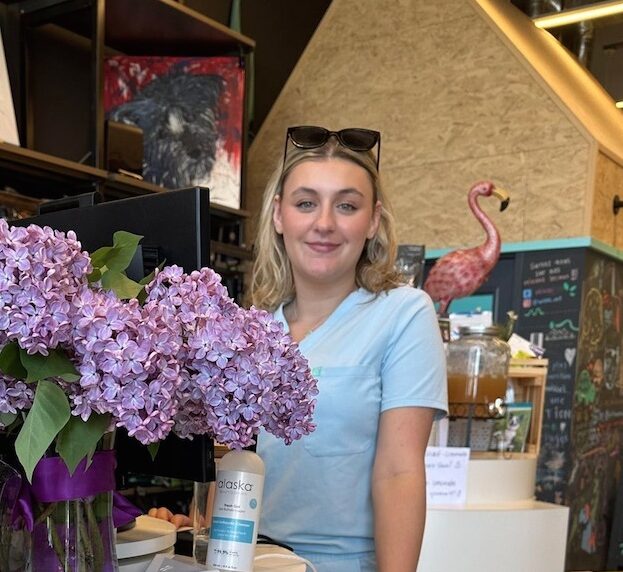Gavroche, the Italian Whippet, perched high on his long legs, is looking with disbelief at Céline, the human, who is explaining to him gently, but with a certain stress in her voice, that they must hurry because they will miss the bus! Today, Céline has made an appointment with the local veterinarian for the health examination, the deworming and especially for the vaccination of the little long-teethed monster.
“But why panic?” Gavroche thought, looking at his human. “With a little patience, I could teach her about the calm and relativity of the Greyhounds”, he thought. One must say that any good Greyhound, be it the English Greyhound, the Afghan Hound, the Borzoi or the Chart Polski, incarnates inevitably and irremediably the following watchword: every reason is good to run fast, very fast, even if we leave on time. Moreover, they remain strongly calm against all odds! Comfortably installed in Céline’s dog backpack, as required by the STM pet section regulations (Pets must at all times remain inside a cage or other closed carrier designed for that purpose), Gavroche takes the bus, then the metro to get to his appointment.
Why worry so much about vaccinating an animal that rarely or never goes outside?
The meeting begins and very quickly Céline and Gavroche are flooded with very relevant information about vaccines; relevant, but also bewildering because of its phenomenal quantity and specificity. For Céline, as for any other person who does not have a medical training, it can be rightly frustrating to be faced with this kind of situation. In order to prevent this little feeling of panic that may be rising within you during a visit to your veterinarian about vaccination, here’s a short summary explaining the reason behind feline and canine vaccine inoculation.
First step: Rabies, a social responsibility
Even in 2019, rabies is still at it in Quebec (1) and around the world. It is transmitted especially by bite or contact of mucous membranes with infected blood. Considering its deadly nature for all affected mammals, including humans, it is essential to ensure that your pet’s rabies vaccination is up-to-date and duly renewed, even if it does not go outside. An unexpected getaway of an unvaccinated cat or dog could literally turn into a nightmare if upon its return it crunched one of your toes after being infected during its outing.
Second step: Zoonoses
A disease is called zoonotic when it can be transmitted from the animal to the human. Of course, even if the love of animals animates and nourishes us, it does not have to contaminate us. So let’s protect ourselves by protecting them. Leptospirosis, a serious zoonotic disease of the dog, comes from a bacteria transmitted following ingestion of stagnant contaminated water, regardless of its origin. A puddle downtown or in Saint-Sauveur-des-Monts carries the same unsuspected potential danger. And beware if your doggie then licks your face! An annual vaccination will protect your small world.
Third step: The prevalence of diseases, frequent or rare…
Certain diseases such as the parvovirus in dogs and the panleukopenia in cats are to this day the major culprits of thousands of unvaccinated animal deaths at a young age. Effective and safe, the so-called “Base Dog” and “Base Cat” vaccines are nevertheless available everywhere. The “Base cat” vaccine includes protection against: the feline infectious rhinotracheitis, the calicivirus, and the feline panleukopenia; that of “Base Dog” includes protection against: the distemper, the adenovirus, the parvovirus, as well as the canine parainfluenza. They must be renewed every three years to maintain their effectiveness.
Fourth and last step: The other afflictions
For the cat, we still have to mention the vaccine against feline leukemia, easily transmitted between cats and relatively widespread in Quebec, as well as the vaccine against feline AIDS, which is more rarely encountered. For the dog, the kennel cough vaccine will be essential for all dog boarding resorts, and finally, the vaccine against Lyme disease that is increasingly common in Quebec and transmitted by ticks in the wild.
As you can see, the role of the veterinary doctor is, first and foremost, to protect human populations against the spread of animal diseases, as well as, of course, protecting and caring for animals. Keeping this perspective in mind, vaccinating our life companions makes sense: vaccinating them is also protecting you!
¹ Canadian Food Inspection Agency, Rabies in Canada 2019.
Dr. Sarah Annie Guénette
BSc Zoology, DMV, PhD Anesthesia and Analgesia




